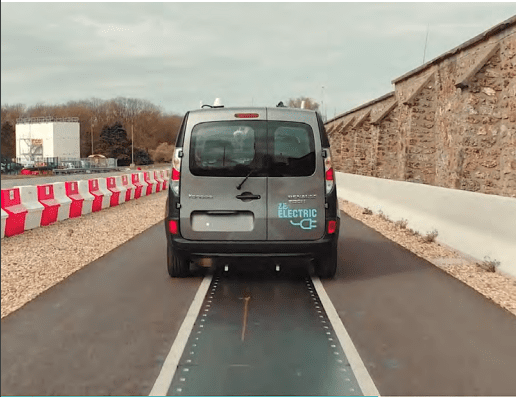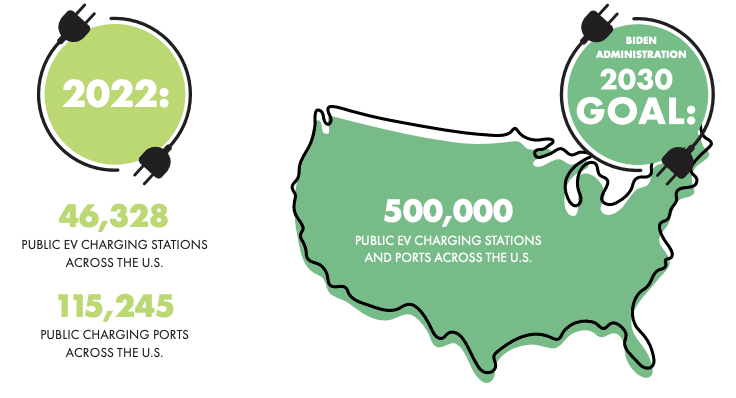Flexible Innovation
April 12, 2022By Paul Eisenstein

General Motors wants to take autonomous driving to the next level, petitioning the National Highway Traffic Safety Administration to permit the launch of commercial ride-sharing services using the new Cruise Origin – which would become the first vehicle ever to operate on public roads with neither steering wheel nor other driver controls.
GM is one of many companies working on self-driving vehicles, millions of which could be operating by the early 2030s. But that’s only one of the radical changes transforming the auto industry to a degree not seen since its earliest days. President Joe Biden wants nearly half of all new vehicles to use battery power by decade’s end. And, by then, connected cars will roll out by the millions.
The question is what sort of infrastructure will be needed to support this grand transformation. And that leads to the follow-up question: who will fund it all? The answers depend upon which technology you’re talking about.
PUBLIC CHARGING NETWORK KEY TO EV SALES
Beefing up the public charging network is essential to encourage EV sales, said General Motors Chairman and Chief Executive Officer Mary Barra. Potential buyers “need to know they can trust that a charging infrastructure” will make it easy to plug in wherever they travel.
General Motors Chairman and Chief Executive Officer Mary Barra. Potential buyers “need to know they can trust that a charging infrastructure” will make it easy to plug in wherever they travel.
The roll-out is accelerating, backed both by startups like ChargePoint and Electrify America, and billions in new federal funds authorized by the Biden infrastructure bill. The administration wants 500,000 chargers in place by 2030.
Meanwhile, connected car pilot programs are already coming together, including one covering a 100 square-mile grid of Southeast Michigan.
CAUTION REQUIRED IN INFRASTRUCTURE SPENDING
But Gary Silberg, a partner and Global Automotive Sector Leader with KPMG, cautions the challenge is to ensure such new infrastructure programs don’t shortcircuit rapid changes in technology the automobility revolution is bringing. “We should be very cautious about throwing billions of dollars into infrastructure because we could wind up backing a technology that becomes obsolete,” he said.
Connected cars offer a case in point. Automakers want a dedicated “V2X” communications network allowing vehicles to not only “talk” to one another but a highway infrastructure. They may lose that battle to the telecom industry which also wants that radio spectrum and says a more cost-effective solution for connected cars is to rely on the existing 5G spectrum.
That could mean that autonomous vehicles will need to operate largely in standalone mode, rather than “off-boarding” digital processing, because there are simply too many gaps in 5G coverage.
Even when it comes to electric vehicles, there are those who question how extensive the infrastructure will need to be. “Today, about 80% of charging is done at home,” said Pat Romano, the Chargepoint chief executive officer. “And that’s likely to remain the case going forward.”
That’s not to say a nationwide charging infrastructure isn’t needed, Silberg emphasizes. Motorists will need public chargers when they stray away from home. That network just won’t need to be a 1-for1 replacement for today’s service station infrastructure.
And it will be critical to ensure that the network is flexible enough to evolve with new charging technologies. Ford and Denso, for example, are working on inductive systems that won’t need you to plug in. As with the latest smartphones, you’ll just drive over an inductive pad to wirelessly recharge. Denso is one of several companies developing ways to charge up will driving, with an inductive system built into the road itself.
TOP TO BOTTOM STRATEGY NEEDED
Silberg stresses infrastructure programs must be thought through from top to bottom. EVs offer a case in point: where will the necessary power come from? The power grid is already creaking, as recent blackouts in California and Texas underscored.
 Ironically, EVs could help address the problem. GM, Ford and Stellantis are among automakers exploring “second life” applications for battery packs. Even when EVs are scrapped, many have enough remaining capacity to be repurposed in backup systems to reduce grid disruptions or to level out renewable energy sources like solar and wind.
Ironically, EVs could help address the problem. GM, Ford and Stellantis are among automakers exploring “second life” applications for battery packs. Even when EVs are scrapped, many have enough remaining capacity to be repurposed in backup systems to reduce grid disruptions or to level out renewable energy sources like solar and wind.
There is little doubt that there will be a need for significant infrastructural changes to support the automobility revolution, but it will be equally critical to think through what that entails before tossing either public or private money at the problem.
Paul Eisenstein is publisher and editor-in-chief of automotive news site TheDetroitBureau.com.
